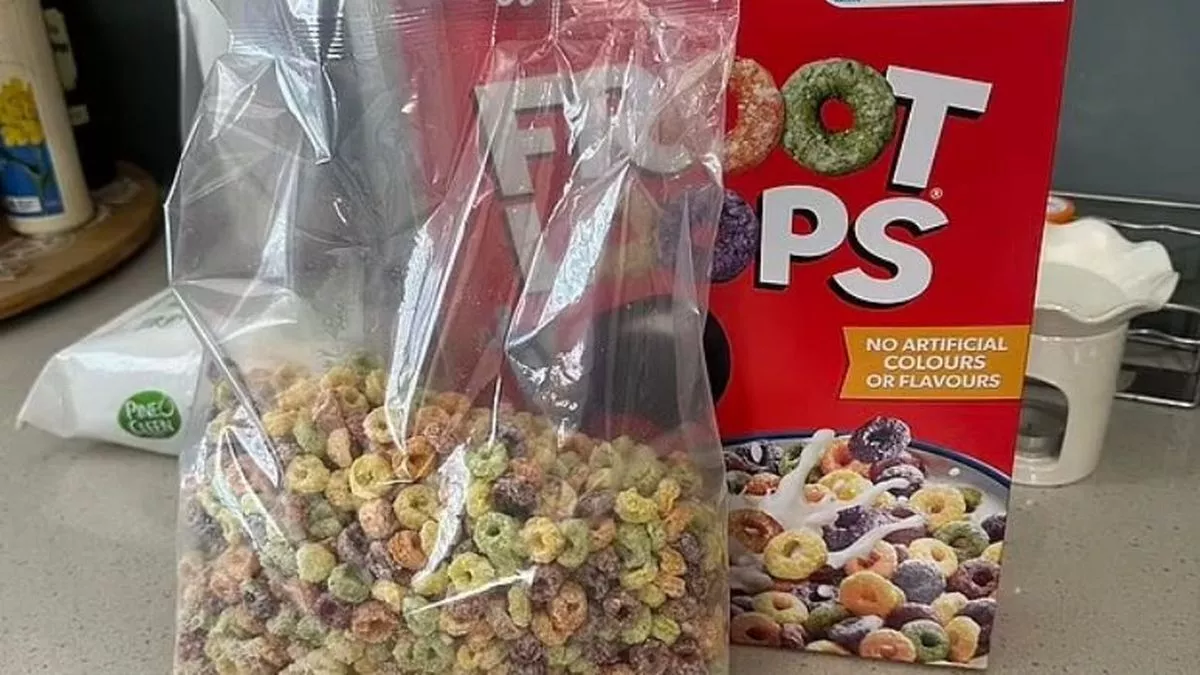
A woman from Victoria, Australia, was shocked to discover she had paid $10 for what she characterized as “barely half” a bag of Froot Loops, calling the scenario “highway robbery.”
Renee, the concerned mother, expressed her unhappiness, stating that her children prefer Froot Loops for breakfast and are unwilling to try other cereals.
“When I opened the box, I was absolutely shocked,” Renee told FEMAIL. “This is highway robbery. I understand that we pay according to weight, but $10 for that much is outrageous. “I was almost astounded.”
Renee’s Facebook post, which included a snapshot of the partially full bag, caused outrage among hundreds of other customers who shared her dissatisfaction. “$10 for half a bag of Froot Loops – the world has gone mad,” she said.

Renee admitted that she had learned her lesson with the pricey purchase.
“I’ll only buy it when it’s on special from now on because I’ll be lucky if the box lasts a week with my family of four,” she said.
Many others shared Renee’s perspective, expressing surprise at the expensive price of cereal. “I don’t understand how companies can charge $10 for cereal at all,” one reviewer said. “Everything is like that these days; it’s ridiculous and a rip-off,” added another concerned mother. “It’s like purchasing a package of chips. Five chips and one bag of air. $10 is ripping off and taking advantage of ordinary Australians at already difficult times,” she continued.
During the conversation, some people recalled how cereal packets used to be nearly full, suggesting a perceived decrease in product quantity over time.
In response to the escalating prices, one mother offered a strategic approach: “I purchase my cereals when they are half-price. They usually go on a six-week cycle, so I get enough to last until the next special.”
However, not everyone understood why some people were hesitant to switch to off-brand products. “The Aldi brand tastes the same – plus it’s cheaper and fuller,” one commenter suggested. Another shared, “Chocopop at Aldi is bigger if you want something else. It’s almost the actual size of the box.”

A voice of reason chimed in, emphasizing the economic principle behind the packaging: “It’s sold by weight, not volume. The air in the bag prevents them from being squashed and protects them. The same goes for all goods like this.”
The debate over the cost of common necessities such as cereal reflects broader worries about the affordability of living costs, particularly in light of economic constraints.
As consumers handle fluctuating pricing and changing product sizes, savvy purchasing habits and a willingness to try new brands may provide some respite in managing household spending.
In an era where every dollar counts, customers are analyzing their purchases to find value without sacrificing quality. As the cost of living rises, the quest for affordability remains critical for families struggling to make ends meet.
















